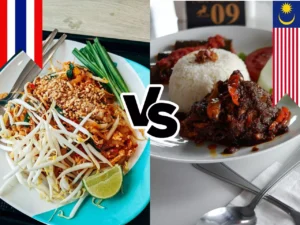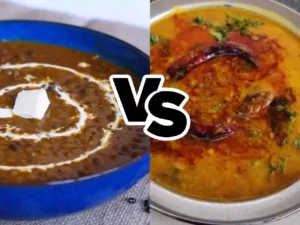Have you come across these two popular deep fried and similar-looking treats – samosa and sambousek, and needed clarification about whether they differ?
They might sound similar, but trust me; they’re not twins!
Let’s dive into the delicious world of these finger-licking delights and figure out what makes them unique.
1. Origin
First things first, these two goodies come from different culinary corners of the world.
Samosa is a culinary gem from South Asia, especially India and its neighboring countries. It’s like a heart-stealing snack with its heavenly taste and crispy crunch.
Sambousek is a Middle Eastern delight that’s a hit across Lebanon, Syria, and other countries in the region. It’s a star in its own right, packing a punch with its flavors and unique flair.
2. Wrapper Wrap-Up
The most noticeable difference between these two snacks is their wrapping style.

Samosa is a triangular wonder that boasts a thicker and heartier outer layer, usually made from all-purpose flour dough. The dough is rolled out creating a visible joining section in the middle of the front, and then stuffed with filling.

Sambousek is more like a delicate pastry hugging the mouthwatering fillings. It’s made with a thin dough and wrapped in a tringular (traditionally). But Labnese sambousek is also wrapped in dumpling-like half moon shape with twisted edges shape, or in roll style.
3. Fillings
Let’s talk about fillings–the delicious stuff that gives these treats their oomph!
Samosa is a whole world of fillings, both veggie and non-veggie. The classics include spiced potatoes, peas, and sometimes minced meat like chicken, lamb, or beef. But get this – you can even find sweet versions with a delicious concoction of nuts and sweeteners.
Sambousek, as a fantastic Middle Eastern munchie, also comes with various fillings to cater to different taste buds. From savory minced meat (often lamb or beef) mixed with onions, herbs, and spices to vegetarian delights like spinach and feta cheese or spiced potatoes, sambousek brings the flavors!
4. The Crunch Factor
The joy of the crunch! Both samosa and sambousek are deep-fried to crispy perfection, ensuring every bite is an explosion of texture and taste.
5. The Pronunciation
The pronunciation of samosa and sambousek also differ slightly depending on the region. Most commonly, samosa is pronounced with a short “o” sound. In contrast, sambousek is pronounced with a long “o” sound.
For example, in India, samosa is pronounced as “suh-moo-suh.” Yet, in the Middle East, sambousek is pronounced as “suhm-boo-suh-kee.”
The Verdict
Both samosas and sambousek are filled with mouthwatering goodness. They do have their unique traits. Samosa rocks the triangular, heartier dough and a wide array of fillings, while sambousek wows with its delicate, flaky pastry and Middle Eastern-inspired flavors.
If you’re wondering where to grab these delectable treats, fret not!
Head to your nearest Indian or South Asian restaurant, and you’re sure to find samosas on the menu. And, to savor the delightful sambousek, check out Middle Eastern eateries or Lebanese restaurants.







